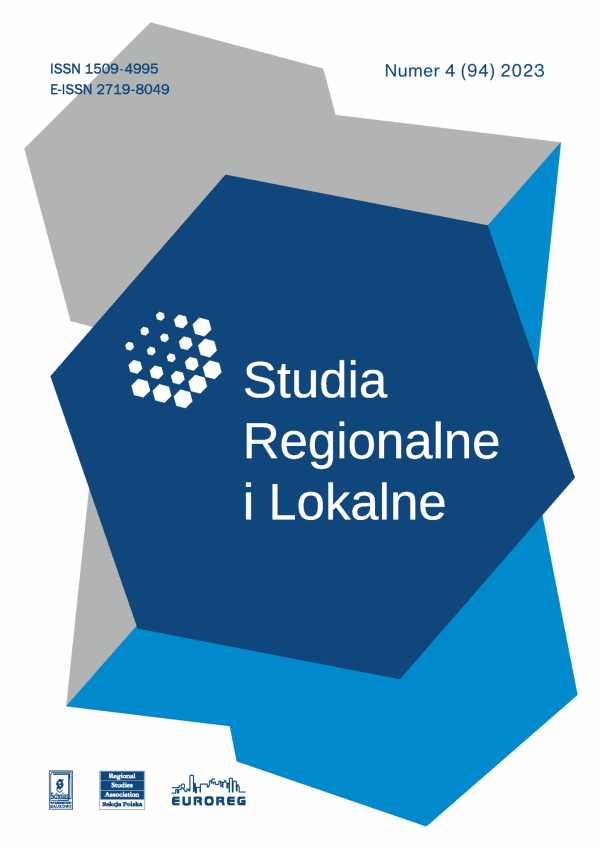Numer:
4(94)/2023
Dominika Wojtowicz, Anna Baczyńska
The Spatial Patterns of Sustainable Development at the Local Level
DOI: 10.7366/1509499549402
The Spatial Patterns of Sustainable Development at the Local Level
Globalisation – characterised by dynamic economic growth, increasing exploitation of the natural environment, and deepening social inequalities – brings negative consequences and is strongly perceptible also in local communities. A new approach to development policy based on the idea of sustainable development must be incorporated into local governments’ strategies, programmes, and actions. We adopted exploratory approach to determine the level and identify the spatial patterns of sustainable development of Polish poviats. The aggregated (synthetic) indicators of economic, social, and environmental development were developed to analyse the spatial patterns of the poviats’ development trends. Our research shows that in Poland there are overwhelmingly more poviats characterised by lower development than those better developed in all three analysed categories. Hierarchical analysis using the Ward’s method revealed that Polish poviats can be divided into three relatively homogeneous clusters in terms of development levels. The largest group consists of poviats characterised by the relatively lowest level of sustainability in economic and social areas, and the highest – by environmental development. Analyses using the Moran method made it possible to determine the so-called spatial regimes of clusters. The captured spatial relationships indicate that selected poviats have a significant impact on the level of development in the neighbouring poviats.
The Spatial Patterns of Sustainable Development at the Local Level
Globalisation – characterised by dynamic economic growth, increasing exploitation of the natural environment, and deepening social inequalities – brings negative consequences and is strongly perceptible also in local communities. A new approach to development policy based on the idea of sustainable development must be incorporated into local governments’ strategies, programmes, and actions. We adopted exploratory approach to determine the level and identify the spatial patterns of sustainable development of Polish poviats. The aggregated (synthetic) indicators of economic, social, and environmental development were developed to analyse the spatial patterns of the poviats’ development trends. Our research shows that in Poland there are overwhelmingly more poviats characterised by lower development than those better developed in all three analysed categories. Hierarchical analysis using the Ward’s method revealed that Polish poviats can be divided into three relatively homogeneous clusters in terms of development levels. The largest group consists of poviats characterised by the relatively lowest level of sustainability in economic and social areas, and the highest – by environmental development. Analyses using the Moran method made it possible to determine the so-called spatial regimes of clusters. The captured spatial relationships indicate that selected poviats have a significant impact on the level of development in the neighbouring poviats.
Afiliacja:
Anna Baczyńska: Kozminski University, 57/59 Jagiellonska Street, 03-301 Warsaw, Poland; ORCID: 0000-0001-5189-4487;
abaczynska@kozminski.edu.pl 


